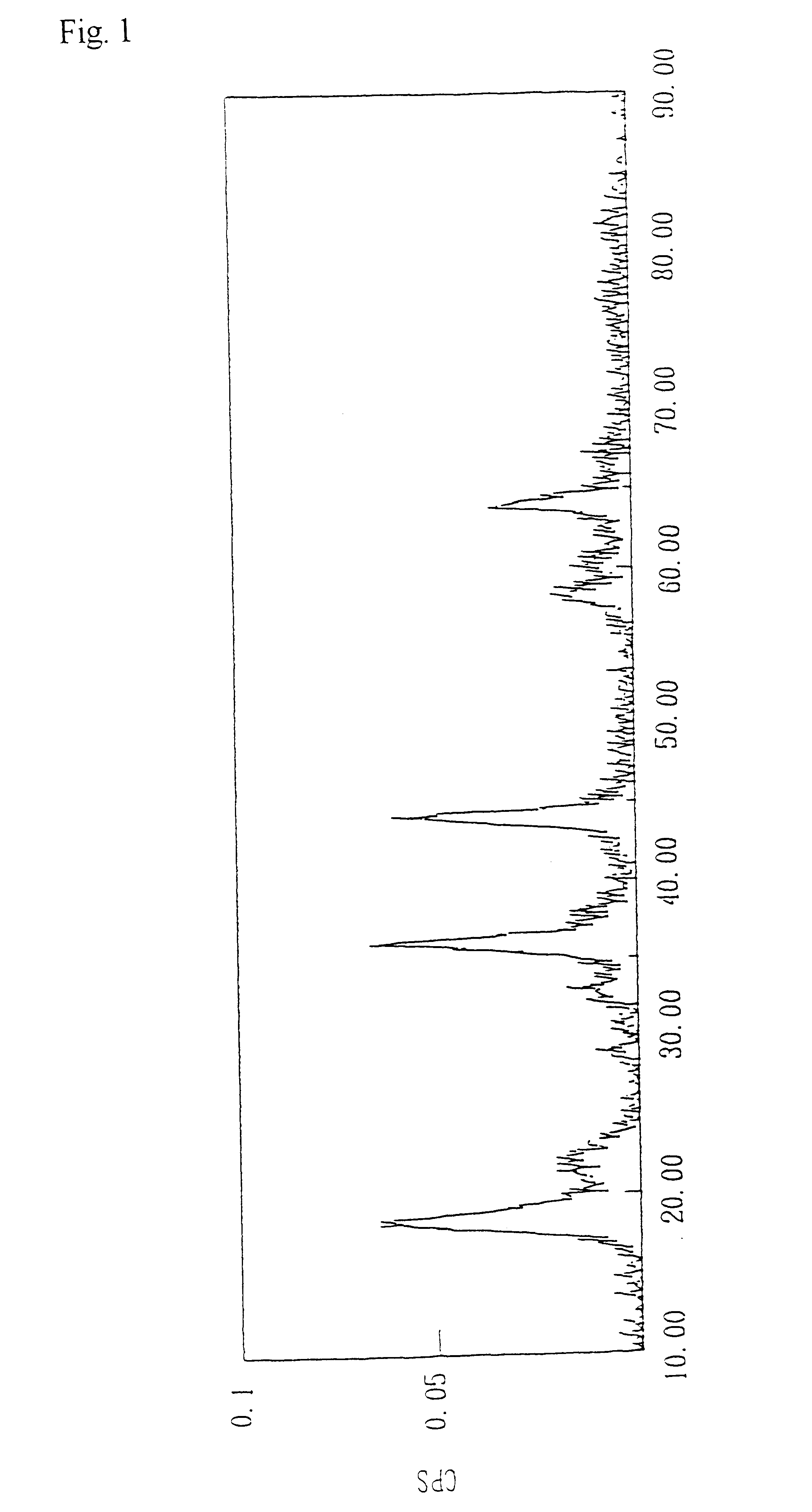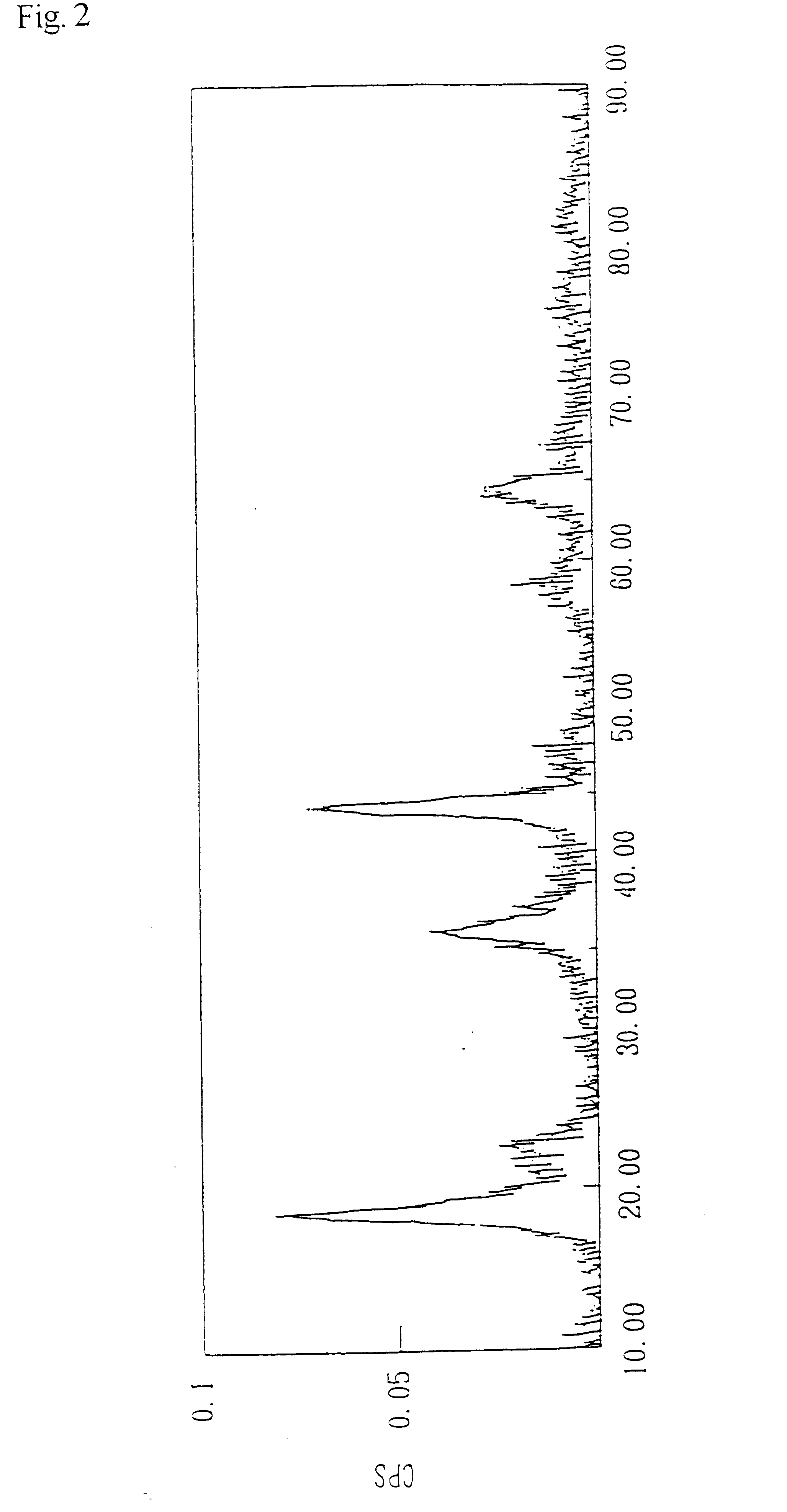Method for preparing lithium manganate and positive electrode for lithium secondary cell containing the same
a technology of positive electrode and lithium manganate, which is applied in the direction of manganates/permanentates, cell components, electrochemical generators, etc., can solve the problems of poor charge/discharge cycle characteristics, low capacity, and detrimental gaps, so as to achieve excellent charge/discharge capacity, reduce cost, and produce more conveniently
- Summary
- Abstract
- Description
- Claims
- Application Information
AI Technical Summary
Benefits of technology
Problems solved by technology
Method used
Image
Examples
example 1
After loading 0.8 liter of 3.25 mole / liter lithium hydroxide aqueous solution into a 2-liter flask equipped with a 1-liter dropping funnel and a stirrer, it was heated up to 91.degree. C. Separately, 0.4 liter of a 1.0 mole / liter manganese dichloride aqueous solution, 0.4 liter of a 0.5 mole / liter lithium chloride aqueous solution and 0.3 mole of hydrogen peroxide were charged into the dropping funnel and a homogeneous mixed solution was formed. The mixed solution was then dropped from the dropping funnel into the heated lithium hydroxide aqueous solution while stirring over a period of 60 minutes. After completion of dropping, reaction was conducted for one hour at 91.degree. C. and the mixture was cooled to room temperature. Washing was then performed 3 times by a procedure in which a suspension containing the resulting produced solid was centrifuged and the supernatant was removed. The obtained solid was dried for twenty-four hours at 120.degree. C. to obtain lithium manganate. T...
example 2
Ten grams of a compound oxide of the lithium manganate with a spinel structure obtained in Example 1 and manganese oxide was subjected to heat treatment at 700.degree. C. for 5.5 hours. The results of analysis of the resulting lithium manganate with a spinel structure are shown in Table 1.
example 3
Lithium manganate was obtained by an experiment conducted in the same manner as Example 1, except that 0.4 liter of a 0.4 mole / liter lithium chloride aqueous solution was used instead of 0.4 liter of a 0.5 mole / liter lithium chloride aqueous solution. The analysis results are shown in Table 2.
PUM
| Property | Measurement | Unit |
|---|---|---|
| temperature | aaaaa | aaaaa |
| specific surface area | aaaaa | aaaaa |
| particle size | aaaaa | aaaaa |
Abstract
Description
Claims
Application Information
 Login to View More
Login to View More - R&D
- Intellectual Property
- Life Sciences
- Materials
- Tech Scout
- Unparalleled Data Quality
- Higher Quality Content
- 60% Fewer Hallucinations
Browse by: Latest US Patents, China's latest patents, Technical Efficacy Thesaurus, Application Domain, Technology Topic, Popular Technical Reports.
© 2025 PatSnap. All rights reserved.Legal|Privacy policy|Modern Slavery Act Transparency Statement|Sitemap|About US| Contact US: help@patsnap.com



